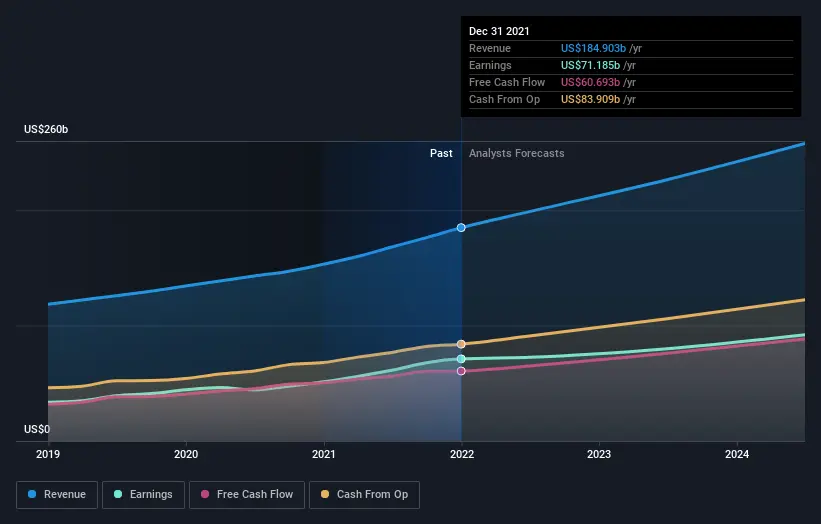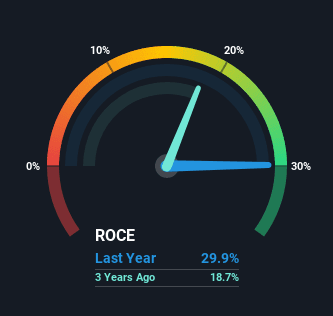Microsoft Corporation(NASDAQ:MSFT) has endured the test of time, and the company has been creating value for over 45 years. This may push investors into fearing that Microsoft might have features of an older company, however our metrics indicate that the company is growing and delivering high returns.
In today's market situation, fear of losing money is starting to overcome the fear of missing out.
This pushes us to look for safe havens and ensure the stability of a portfolio before looking for new future frontiers.
Even though Microsoft is a mature company, it seems that they have kicked off in the right direction after theirCEO Staya Nadella took office in 2014. This has resulted in the company taking smart projects and acquisitions, which have in turn fueled Microsoft's growth.
Microsoft is still Growing
Investors need high growth in the future in order to justify lenient valuations of a stock.
Today, Microsoft trades at a price to earnings ratio of 30.6x and a price to sales ratio of 11.8x. These valuations are usually viable for companies that are expected to have high growth in the future, and in Microsoft, this is precisely what we see.
Microsoft is expected to grow annual revenue to US$257.8b in the first half of 2024. This is a total growth of 39% over that period, or about 12.4% annually.
When compared to the industry (14.6%), it seems that Microsoft is lagging behind, but it is actually over performing when we take into account the already massive size of the company and the limited future growth avenues.
In order to get a better picture of the company's direction, we combined the past performance with the average expectation from analysts in the chart below.

Investors are also interested in the bottom line, and it seems Microsoft has managed to increase net income by 38.7%from 12 months ago, which is higher than the 28.1% growth the company it had on an annual basis in the last 5 years. Analysts are also optimistic on the future of earnings, and estimate a growth of 12% annually.
Quality of Decision-Making
Growth is a reflection of the company engaging in smart projects and reinvesting into the business.
In order to get a better sense of the quality of decisions, we want to see what they have yielded in the past.The logic behind this is that a company that takes better projects and is efficiently running operations will yield a greater return on its capital.
As Microsoft employs both debt and equity into its capital projects, we will consider the Return on Capital Employed as a more appropriate measure.
ROCE measures the 'return' (pre-tax profit) a company generates from capital employed in its business.
We calculate ROCE as:
Return on Capital Employed = Earnings Before Interest and Tax (EBIT) ÷ (Total Assets - Current Liabilities)
0.30 = US$79b ÷ (US$340b - US$78b)(Based on the trailing twelve months to December 2021).
Therefore,Microsoft has an ROCE of 30%.
That's a fantastic return, and not only that,it outpaces the average of 9.5% earned by companiesin a similar industry.

Microsoft is displaying some positive trends.Over the last five years, returns on capital employed have risen from 19%,substantially to 30%.
The company is effectively making more money per dollar of capital used, and it's worth noting that the amount of capital has increased too, by 71%.This can indicate that there are plenty of opportunities to invest capital internally and at ever higher rates.
Key Takeaways
Microsoft is expected to continue growing both revenue and earnings at a double-digit rate. This view is both shared by the analysts covering the company, and is also founded on the high return rate of capital employed in the company.
It seems that Microsoft is running a fundamentally efficient operation and the new CEO keeps making financially sound decisions. The stock may not provide a high return to investors on the account of its already high market cap, but is sure to be interesting for investors that want to stabilize their portfolio with strong companies.
Comments